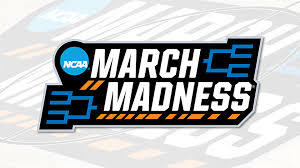
Hold your hoops, folks — the much awaited national basketball phenomenon has at last hit the stadiums. This past month has been an eventful one for the NCAA as 68 teams compete in March Madness. If, like me, you may not be exceptionally versed (or even literate) in the world of basketball, consider this your amateurly researched crash course. There is no reason to stay away from the thrilling drama on the courts.
Every year, the best men’s Division I basketball teams are chosen on Selection Sunday by a 12-person committee of conference administrators and commissioners. Decisions are typically based on statistics, quality of wins and rigor of schedules, factored in with a model called the NCAA Evaluation Tool which ranks teams based on their records. Many teams already know if they will be chosen, since the winners of the 32 conference tournaments leading up to March automatically get a spot. At-large teams, however, are considered “on the bubble,” meaning that the decision could swing either way for them.
This year, Selection Sunday took place on St. Patrick’s Day. Not only are the teams who make the cut released, but who they are assigned to compete in a game (seeded) against and where they will play. The seeding is based on the rankings of the teams one through 68, so first the bottom four teams play each other to root out the worst of the bunch in a round called the First Four. March Madness, Selection Sunday, First Four? The NCAA sure loves their alliteration.
After this preliminary round, the remaining 64 teams are divided up by region (South, Midwest, East and West) and then seeded again in their groups of one through 16. Number one teams play number 16 teams, number two play number 15 and so on. The top seeds of each region this year are the University of Connecticut, the University of North Carolina at Chapel Hill, Purdue University and the University of Houston, with Connecticut as the top overall seed.
The path from 68 teams to just one winner in March Madness is most frequently visualized as a fractal tree diagram made up of many brackets. Almost 58% of proposed brackets included UConn making it to the Final Four — more than any other team. 41% of brackets predicted Houston making it, 36% picked North Carolina and 35% percent picked Purdue. Who knew there was so much math in basketball?
The recent schedule played out with the First Four on March 19-20, the first round on March 21-22, the second round on March 23-24, the Sweet 16 on March 28-29 and the Elite Eight on March 30-31. The Final Four games will take place April 6 at State Farm Stadium in Glendale, Arizona and the championship game will be two days later in the same location.
At the time of this article’s composition, some notable wins have already surprised fans around the country. Seeded eight and nine in the East region, Florida Atlantic, which was in the Final Four a few years ago, lost to Northwestern in an overtime game. Oakland Golden Grizzlies, seeded 14, beat Kentucky Wildcats, seeded third, flipping the brackets on their heads. Three out of four number 11 teams, Duquesne University, University of Oregon and North Carolina State beat out the number six teams they played against.
Since the first national basketball competition was played in 1939 with only eight teams (won by the University of Oregon!) March Madness has continued to expand all the way into 2011 when the 68 team number we have now was reached. As the games continue to heat up, make sure you catch the scores and follow the rapidly shifting plot of this year’s addition to a long and rich history of beautiful basketball bonanzas (the NCAA is not the only one who can alliterate).
Subscribe to the Mossy Log Newsletter
Stay up to date with the goings-on at Lewis & Clark! Get the top stories or your favorite section delivered to your inbox whenever we release a new issue.

Leave a Reply